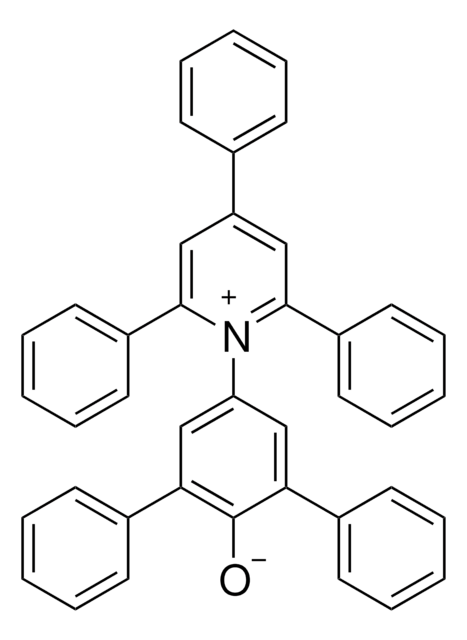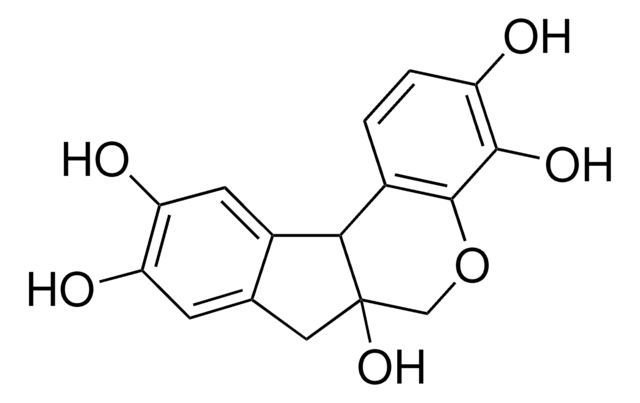About This Item
Recommended Products
form
solid
Quality Level
composition
Dye content, 90%
mp
285 °C (dec.) (lit.)
λmax
555 nm
fluorescence
λex 555 nm; λem 578 nm in methanol
SMILES string
[Na+].CCCCN1C(=O)C(=C\C=C\C=C2/Oc3ccccc3N2CCCS([O-])(=O)=O)\C(=O)N(CCCC)C1=S
InChI
1S/C26H33N3O6S2.Na/c1-3-5-16-28-24(30)20(25(31)29(26(28)36)17-6-4-2)12-7-10-15-23-27(18-11-19-37(32,33)34)21-13-8-9-14-22(21)35-23;/h7-10,12-15H,3-6,11,16-19H2,1-2H3,(H,32,33,34);/q;+1/p-1/b10-7+,23-15-;
InChI key
OSQUFVVXNRMSHL-LTHRDKTGSA-M
Looking for similar products? Visit Product Comparison Guide
Related Categories
Application
Packaging
Storage Class Code
11 - Combustible Solids
WGK
WGK 3
Flash Point(F)
Not applicable
Flash Point(C)
Not applicable
Personal Protective Equipment
Choose from one of the most recent versions:
Already Own This Product?
Find documentation for the products that you have recently purchased in the Document Library.
Customers Also Viewed
Articles
Dye-sensitized solar cells (DSCs) are 3rd generation solar cells combining the promise of high efficiency with low production costs.
While dye sensitization as the basis for color photography has been accepted for a very long time,1 attempts to use this principle for the conversion of solar light to electricity generally had resulted only in very low photocurrents, below 100 nA/cm
Global Trade Item Number
| SKU | GTIN |
|---|---|
| 323756-100MG | 4061826708989 |
| 323756-250MG |
Our team of scientists has experience in all areas of research including Life Science, Material Science, Chemical Synthesis, Chromatography, Analytical and many others.
Contact Technical Service![1′,3′-Dihydro-1′,3′,3′-trimethyl-6-nitrospiro[2H-1-benzopyran-2,2′-(2H)-indole] 98%](/deepweb/assets/sigmaaldrich/product/structures/503/745/147ecd2c-44b9-46e9-a8c9-bff9a2577218/640/147ecd2c-44b9-46e9-a8c9-bff9a2577218.png)





![trans-4-[4-(Dimethylamino)styryl]-1-methylpyridinium iodide Dye content 98 %](/deepweb/assets/sigmaaldrich/product/structures/416/722/5d59b6c3-5f2d-4396-a721-5cb82ba7038c/640/5d59b6c3-5f2d-4396-a721-5cb82ba7038c.png)
![1,3-Bis[4-(dimethylamino)phenyl]-2,4-dihydroxycyclobutenediylium dihydroxide, bis(inner salt) Dye content 90 %](/deepweb/assets/sigmaaldrich/product/structures/301/519/500149b3-198c-44cf-b952-7e91f54fc48e/640/500149b3-198c-44cf-b952-7e91f54fc48e.png)
